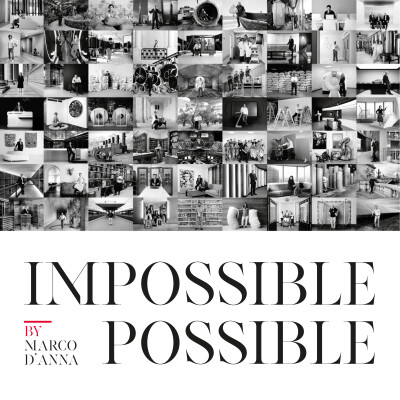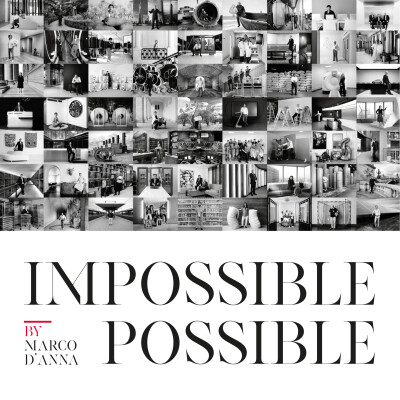Emilie DelormeArt brings to each person their share of sensitivity, their connection to other human beings, their connection to the world, their connection to nature, and ultimately to humanity. Through culture, everyone can reconnect with humanity and find their rightful place. The mission of the cultural world is to ensure that every human being has this opportunity. I was lucky enough to have encountered music at a very young age in my life. I grew up in a dormitory town, which was a beautiful city, with a lot of diverse populations, but with very few people who had access to music education or other cultural practices. I had this deep conviction that I needed to share music and that it would be my life to share this passion for music. So I didn't know what form it would take, and because I didn't come from a music background at all, it took me a long time to figure out where I was going to be and how I was going to do it. So I continued my musical education while studying and exploring all the paths I could, to try and find my place. When you get good grades in math, you are sent to preparatory classes, and then you take exams and go to an engineering school. In fact, one of the first things I did at engineering school was to set up an arts office, and then to form a university orchestra with other classmates. So I continued my musical practice during my engineering studies. At the end of my studies at the School of Mines, I did my internship at an investment bank. And then, at some point, I found myself stuck; it was a stop. I felt I wasn't where I was supposed to be. So I took a break and resumed my studies by doing a postgraduate programme in cultural management. It was a year where I spent a lot of time in museums, in art galleries, discovering other disciplines that weren't necessarily my world and that I hadn't had access to. At the end of that year, I started working at the Festival d'Aix-en-Provence. Then I worked at the Opera of La Monnaie in Brussels. And then, in my last position, I took over the direction of the Academy and the concerts of the Festival. It was at the end of this last experience that I applied for the direction of the Conservatoire of Paris. I was the first woman to be appointed as Director of the Conservatoire since its foundation in 1795. Recently we also appointed the first woman professor of cello within the institution and soon the first woman professor in the jazz department. So there are still firsts to conquer, both within the institution and in the rest of society at large. And when you are appointed to a leadership position, it is a mandate, so for a short time you are part of history. It is really about thinking about where we have come from and where the institution is going, to say very modestly that we will be there for a few years to influence that path, with a whole team behind us, teachers and staff who have often been there before you and will be there after you. Our students come from a wide variety of backgrounds, depending on the discipline. We teach all the instruments of the orchestral professions, but we also train sound engineers, musicologists, composers, conductors, dancers and choreographic movement notators. So there are some students who are even younger than thirteen or fourteen, who are exceptions that we can find in classical dance or in some of the most demanding instruments. And then there are people who come to train as teachers or movement notators, for whom we have no age limit. So we really have the whole spectrum in terms of age. It is often a vocation that is chosen at a very young age, and it has been an immense effort to get here. So that is a uniqueness that in my opinion was the same a hundred years ago and will be the same a hundred years from now. Even though we talk a lot about talent in a place like ours, hard work is still fundamental to success. I think very few people know about the Conservatoire, except those who want to go there. And one of the particularities of this magnificent building by Christian de Portzamparc, where we have been for more than thirty years now, is that it has three auditoriums that are in use all year round and where the students give performances free of charge to the public. It changes every day. And sometimes there are several halls with different performances. So almost every evening we have one, two or three performances. So I finish my day behind the desk and go down to the halls. And there I see them on stage. And generally, I am very, very proud to see both the level of the students and to see their commitment, to see their smiles, to see the reaction of the audience. That really is the essence of the job. We know that the music sector right now and the choreographic sector, live performance in fact is going through an unprecedented crisis. As students in this sector, we inevitably wonder about the opportunities we will have afterwards. Live performance is a heavily subsidised sector, but it needs patronage to develop. On the music side, if you ask musicians to name a patron in the music field, I think the first name that comes up is the musical patronage of the Société Générale, which is one of the main patrons of this sector, supporting many festivals and institutions, particularly in the form of scholarships for students. The acquisition of instruments is an extremely important issue for the professional integration of musicians, because if they do not have a good instrument, they will not be able to succeed in entrance exams for orchestras or auditions. These are very significant investments, which can amount to several hundred thousand euros for certain instruments. And so, being able to have patrons who support them with scholarships to gradually gather a sum to acquire an instrument is important. Moreover, Société Générale has its own collection of instruments that it deposits with us so that we can lend them to students. There is both this contribution of instruments and financial scholarships that help many of our students. I often say that if you go to an orchestra concert in France, you have almost one hundred percent chance of seeing someone on stage who has been helped by Société Générale at some point in their studies. One of my goals is to have a Conservatoire that is as open as possible. So, what does 'open' mean? It means that there are opportunities for exchange and permeability with many different fields. Since the beginning of 2024, the Conservatoire has obtained the status of a European university and is therefore allied with eight other universities in European countries, which allows for greater mobility of students, staff and teachers, but also to better share best practices and to move forward together on societal issues. So, for me, this is really a factor that allows for continuous improvement of what we can offer at the Conservatoire. Perhaps a final issue is the challenge of the ecological transition, which also requires a rethinking of professional practices. And so, in an institution like ours, we have to support this reflection, which I would almost say is forced upon us by the fact that a new generation is arriving and has been dealing with these issues since they were born, unfortunately, I would almost say. In an ideal world, everyone would have the opportunity to have that encounter with all the arts, not just music or dance. And then that encounter can lead to different things. Sometimes you might just pass by, but at least everyone should have that moment of encounter with art that allows them to question their own sensibility, their own desire to practice both as a spectator and as an artist or creator. This seems fundamental to me. And then, there should be places for creation that can welcome all types of audiences, whether we have an amateur, semi-professional, or professional practice, each in their own place, each withtheir cultural contribution, their creative contribution, that would be an ideal world.




